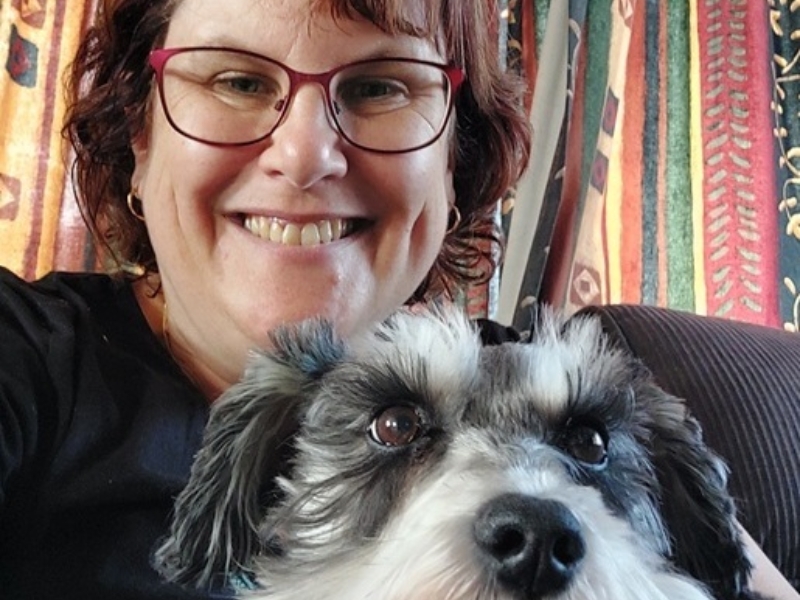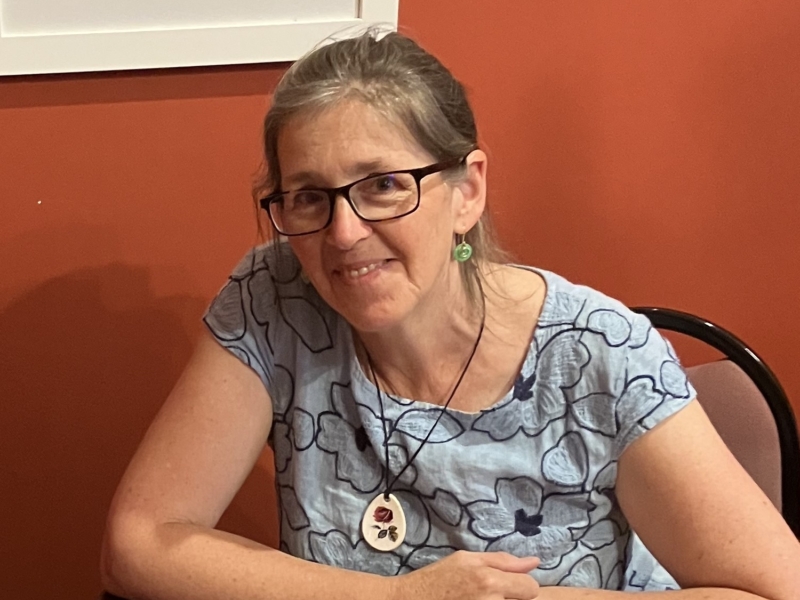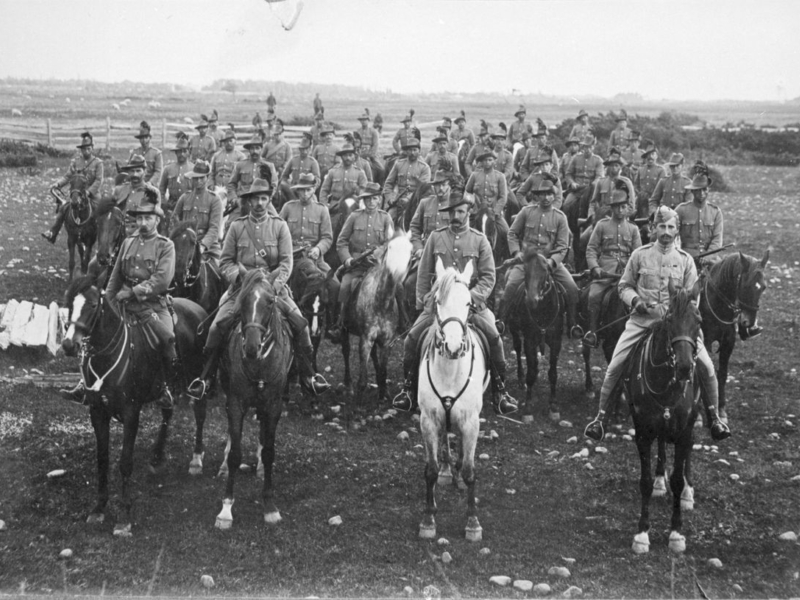Tell us about yourself. Where are you originally from?
I was born in Harrogate, Yorkshire, UK. My parents decided to get as far away from the Northern hemisphere as they could because of the Cold War. There were early warning stations on the moors where our family went tramping. They looked like monstrous golf balls and were to alert the government to any Russian missiles coming our way so that we could respond before we were wiped out. This policy was known as MAD - mutually assured destruction.
How long have you lived in Palmerston North?
I've lived in Palmy since 1961. Back then the railway still ran through Te Marae o Hine The Square, and the Public Library was on the second floor of a building on the corner of Te Marae o Hine The Square and Fitzherbert Avenue. When I cycled to high school I'd pass the massive, corrugated iron Manawatū Flour Mills building, which to a twelve-year-old Pom looked like something out of the Wild West.
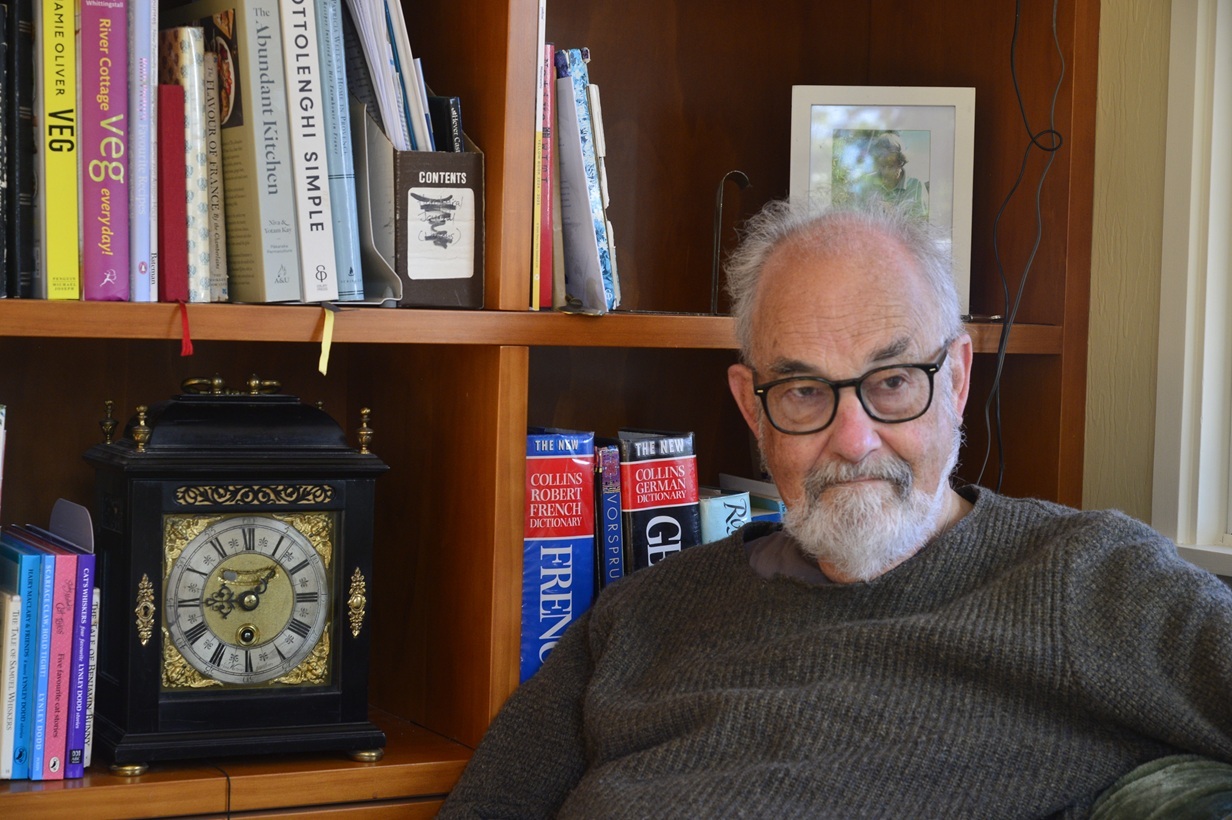
Where did you train?
After attending Freyberg High School, I studied at Massey University and left in 1976 with an MA in History. My master's thesis analysed the civilian response to the First World War in Aotearoa New Zealand. This confirmed my interest in social history.
It is a pity that oral history was not accepted as 'valid' when I was researching my thesis. At the time there would still have been plenty of people who had been alive in 1914-18 and would have experienced patriotic fund-raising events or heard of people who were ostracised out of fear that they were German or Austrian. After university I took a postgraduate diploma in Library Studies in Wellington.
Tell us about your career.
I first worked in the Reference Department at Palmy City Library. This was in the building on the corner of Te Marae o Hine The Square and Main Street opposite the old Post Office. In the late 1970s IT was slowly being introduced into public libraries, starting with the issuing and returning of books using databases containing records of books and Library members. All the system had to do was match a membership record with records of items borrowed.
Unfortunately (or, perhaps, inevitably) the system decided to match books and borrowers on a random basis. I won't forget being faced by an elderly lady who pushed an overdue notice under my nose. "I have NOT had The Joy of Sex" she said, before striding off down the stairs.
In 1981 I became Manager of Feilding's 'new' Public Library. It had been built a year earlier and was still the pride of the town. In 1989 Feilding became the centre of a new, amalgamated Manawatū District and the building was enlarged to meet demand. The Library was very popular, and our collections were very well used, particularly the Children's Library.
Heritage resources were always a big part of our services and by the time I retired in 2016 our entire hard copy photographic collection had been digitised and was available online.
We were lucky in that Feilding's, and later Manawatū District Council's politicians were always supportive of the Library. This tradition has continued. The Feilding Library building was recently completely rebuilt and enlarged and is one of the finest district libraries in Aotearoa.
Shortly before retirement I began making oral history recordings and writing articles for the Manawatū Journal of History.
What is your favourite part about living in Palmerston North?
A couple of weeks ago I stopped at the café in Ascot Street and sat at a pavement table with a coffee and scone. In 1961 the café had been a branch library and the first New Zealand library I joined. Just around the corner in Pahiatua Street is the flat we lived in when my family came to Aotearoa and across the road from the café is the kindergarten where my Mum worked as a teacher. At the bottom of Te Awe Awe Street is my family's first house, built on a section which had been the orchard adjoining a 1902 bay villa.
The last fifty or so years have seen more change than any other in history. I've been lucky to spend my adult life in Palmy and see the city evolve so that today I'm always aware of its many layers - the Plaza which used to be the site of the PDC department store with its revolving kiwi on the roof, the DIC, another department store, now the City Library, and parts of the central city where I remember there being an auction house, toy shop or cinema.
What do you do for fun?
Well, I used to go to antiques auctions around the North Island but Trade Me put an end to that. Over the last year or so I have written articles on childhood items held by Te Manawa along with other local historians. I've enjoyed this very much. The important thing is to give each item a social context - what does it say about attitudes at the time and the society in which they were made and used?
What is something that most people don’t know about you?
I was able to play an important part in saving the carved ceiling of an English medieval church from leaks. Since retiring, my wife Carol and I have made several visits to friends in the UK. I took up photographing the stone and wood carvings in parish churches throughout East Anglia.
All Saints, Gazeley has a chancel ceiling divided into around 150 panels in the mid fifteenth century. They are now so dirty and water stained that you can only tell what is on them by taking a photograph with a telephoto lens and then digitally sharpening it. What emerged was a patchwork of panels with a wonderful range of subjects - angels, saints, farm animals, mythical creatures, toilet humour, flowers, birds.
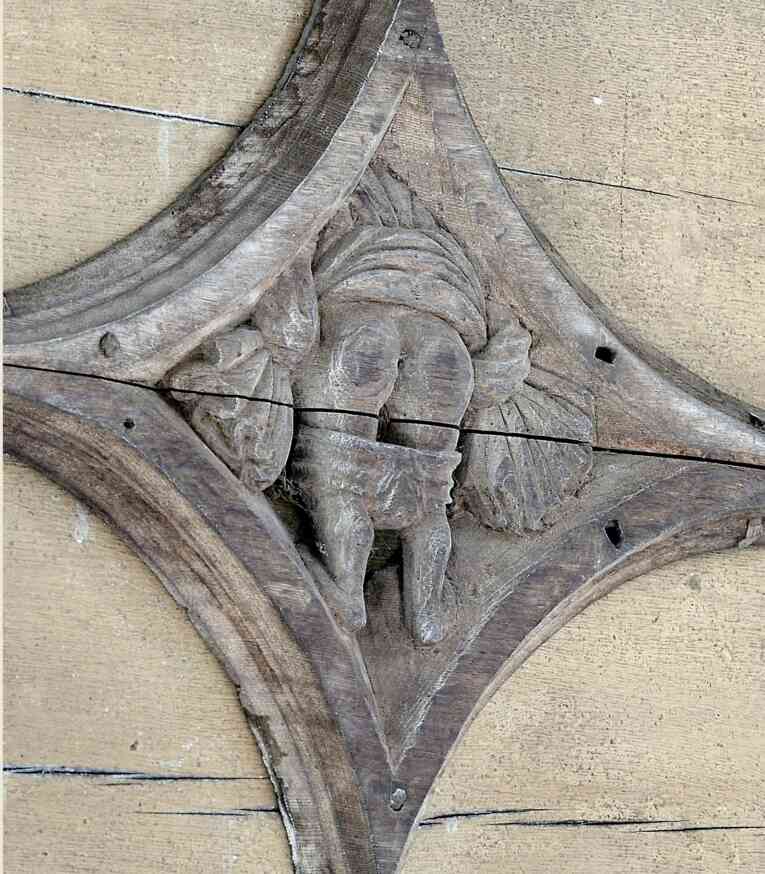
I gave a set of photos to the Churchwarden by way of thanks. She was very surprised. The height and condition of the ceiling meant that most of the carvings had gone unnoticed.
An energetic parishioner was subsequently able to use the photographs along with recommendations from academics to raise the money needed for a new roof and full conservation of the carved panels.
Charitable funds for church conservation are very hard to come by in the UK where every village has a medieval church and most have structural issues. My photographs, along with backup from academics and the tenacity of Gazeley's master fundraiser Rob Pilsworth made the difference.
Any projects in the pipeline?
At the moment I'm researching a couple of fizzy drink factories in Feilding. In the late nineteenth century their products would have been as popular with prohibitionists as they were with children.
Later in the year I want to write an article of Feilding's old Drill Hall which was demolished in the mid-1950s to make way for the Civic Centre. Money was raised for the project through a monster queen carnival. Last year I was able to record a conversation I had with one of the carnival queen contestants and I hope to talk to older Feilding residents who remember dances and other events during the period.
